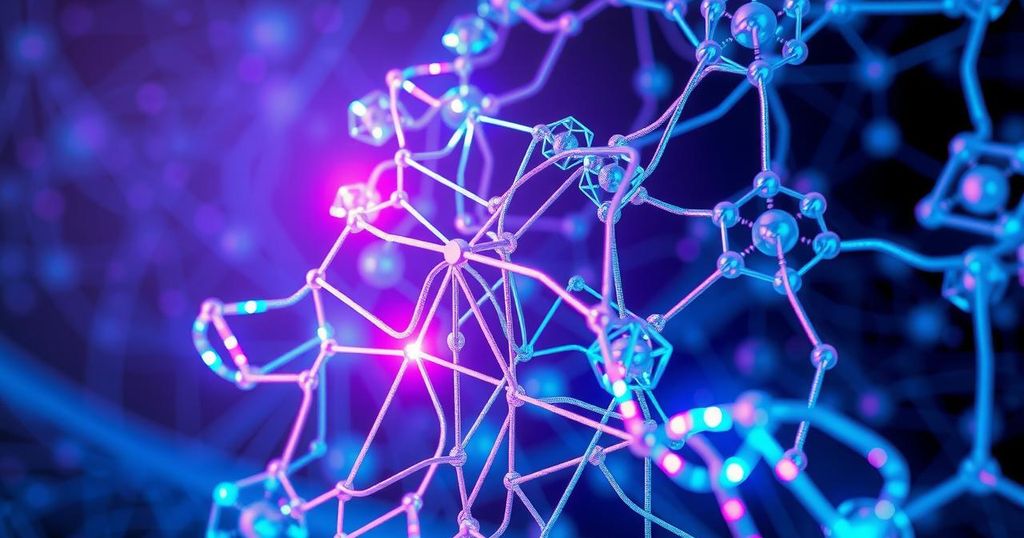A.G.I.: The Hype vs. Reality of Realizing Artificial Intelligence
Tech leaders like Sam Altman and Elon Musk forecast imminent A.G.I., but many experts express skepticism about this timeline. Critical opinions highlight the current limitations of A.I. technologies, which merely predict data patterns rather than replicate human thought. The gap between human cognition and machine capabilities remains significant, suggesting genuine A.G.I. may be further off than anticipated.
In a world increasingly captivated by the promise of artificial general intelligence (A.G.I.), tech industry giants are claiming breakthroughs are just around the corner. Sam Altman from OpenAI recently informed President Trump that A.G.I. could arrive before the end of his administration. Meanwhile, competitors like Dario Amodei of Anthropic and Elon Musk are even more optimistic, insisting it could be achieved sooner. But are they overestimating the progress?
At its core, A.G.I. signifies a future where machines could replicate human-level intelligence. The term has evolved since the early 2000s when a group of researchers showcased it in a book about autonomous systems. A neatly packaged idea—A.G.I. encompasses the desire for machines that can cognitively match us in diverse tasks. Amidst great excitement, Altman, Amodei, and Musk have pushed forward with this vision. And they’ve developed technologies reshaping how millions interact with information, create art, and program.
Yet, despite the surge of chatbots like ChatGPT in recent years, skepticism remains. Notably, voices from within the tech industry are cautioning against leaping to conclusions about A.G.I.’s approach. Nick Frosst, co-founder of the A.I. startup Cohere, highlights, “The technology we’re building today is not sufficient to get there.” Current systems primarily engage in predicting patterns from data, a far cry from genuine human cognition.
A recent survey by the Association for the Advancement of Artificial Intelligence revealed that over three-fourths of respondents doubt current methods could lead to A.G.I. This uncertainty stems from an ongoing debate among scientists over the nature and definition of human intelligence itself. It’s bafflingly subjective when pitted against artificial constructs, leading to an array of opinions surrounding A.G.I.’s existence and capabilities.
Hard evidence supporting A.G.I.’s imminent arrival still feels elusive. Today’s systems are only scratching the surface of tasks humans excel at effortlessly, like recognizing irony or experiencing empathy. What seems clear is that proclamations surrounding A.G.I. are often grounded in hope and anticipation rather than concrete evidence.
Although various benchmarks portray improvements in specific areas like math or coding, those metrics don’t capture the multifaceted nature of human intelligence. Machines can’t handle the unexpected, nor can they conjure entirely new ideas or solutions. Frosst and others assert that to bridge this gulf, a revolutionary idea is essential—something tech experts haven’t conceptualized yet.
In conversations about neural networks—the backbone of contemporary chatbots—some technologists like Jared Kaplan recognize potential but also stress the key differences between A.I. and human learning. “A.I. intelligence is quite different from human intelligence,” he points out. Progress is happening, but there’s a fundamental gap in how A.I. learns compared to us.
Take the example of AlphaGo, which surpassed human expertise in the game of Go through reinforcement learning. Yet, such triumphs occur within confined environments. Extending that success to the chaotic and varied real world feels like an uphill battle, leaving many unsure if A.G.I. is indeed just around the corner.
It’s also crucial to acknowledge that while machines have outpaced humans in narrow tasks—like calculations and data processing—they lack the richness of human experience. Intelligence branches into realms beyond mere numbers or language; it’s about understanding context and nuance. Josh Tenenbaum from MIT emphasizes this, capturing the essence of intelligence in our interactions with our environment.
Creating humanoid robots to replicate human intelligence is complex and requires practical training—hill after hill to climb compared to chatbot development. Reinforcement learning sees success in mathematics and programming but struggles with creative pursuits, philosophy, or ethics.
People often romanticize the advent of A.G.I., echoing tales of ancient myths like the Golem and narratives from iconic literature. Enthusiasm for intelligent machines has blossomed as chatbots entered our daily lives. Yet many of the predictions coming from early academic enthusiasts about rapid advancements haven’t wholly materialized. A perceived sense of urgency swells among tech creators today, marking an exhilarating but uncertain trajectory for A.G.I.
Despite dreams of impending technological revolution, many acknowledge a monumental hurdle lies ahead. Yann LeCun, the chief A.I. scientist at Meta, associates his hope with a degree of realism. “A lot is riding on figuring out whether the next generation architecture will deliver human-level A.I. within the next 10 years,” he states, further emphasizing the unpredictability of such a timeline.
In essence, while the tech industry buzzes with optimism over the potential of A.G.I., a closer examination reveals gaps in current capabilities versus true human-like intelligence. Skeptics point out that despite advances, significant challenges remain in replicating human cognition and flexibility. The journey toward A.G.I. is more of a marathon than a sprint, hinging on unexpected breakthroughs that may or may not come in the near future. Thus, the quest for A.G.I. continues, melding both excitement and caution in a field still grappling with its core definitions.
Original Source: www.nytimes.com




Post Comment